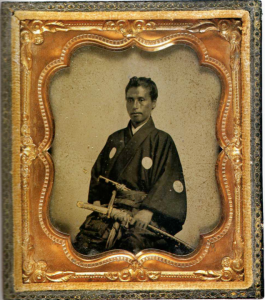In 1878, ten years after the fall of the Tokugawa Shogunate, Katsu Kaishu published a short, poignant narrative of tumultuous events that occurred between the fall of 1856 and around mid-1868. These events, in which Kaishu was either directly involved or witnessed directly or indirectly, informed modern Japanese history, and therefore influenced Asian and world history. The narrative is entitled Danchonoki (断腸之記) which I translate as “Heartrending Narrative.”
Katsu Kaishu, “the shogun’s last samurai” of my book Samurai Revolution, was a keen observer of human behavior. He had a deep understanding of human nature and, I think, the human condition. He was a prolific and penetrating writer, for which I am very grateful. One of my favorite quotes from his writing is the last line of the Epilogue of “Heartrending Narrative”:
“An old saying has it that one should not tell his dreams to an idiot. I reverse that to say: Only an idiot tells his dreams.”

(This photo of Katsu Kaishu was taken in 1860 during his stay in San Francisco. He sent a copy to his mistress in Nagasaki, Kaji Kuma, who was living with their son, Umetaro. It is used (without the frame) in Samurai Revolution, courtesy of Ishiguro Keisho.)
For updates about new content, connect with me on Facebook.

